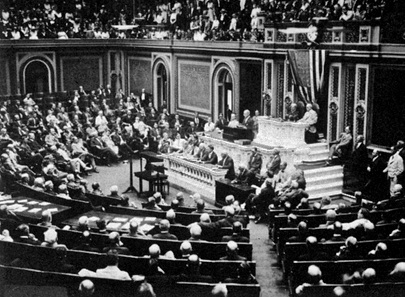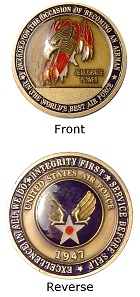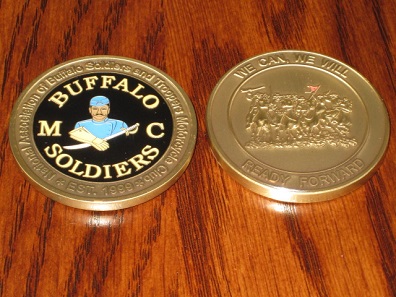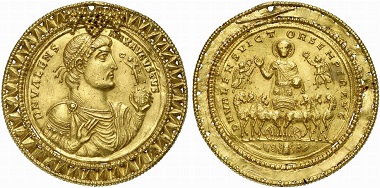by Björn Schöpe
translated by Katja Protsiva
June 28, 2018 – In spring 2018, the media heatedly reported on the planned summit between the president of the USA and the “Supreme Leader” of North Korea. Unfortunately, just when North Korea canceled the meeting, a “coin”, as the media called it, was issued for this “historic occasion”. It lead to a lot of scorn and derision. Especially outside of the USA, people had the impression, that Donald Trump had invented such a mint for marketing reasons. But actually, it goes back to a totally different tradition that has been forgotten in the Old World, although it originated there.
On 3 February 1917, US president Woodrow Wilson announced the end of the diplomatic relations with Germany in front of the Congress. Right after that, the USA entered the war.
A story too good to be true
IIn the USA, this souvenir is called “challenge coin”. There are different stories about the origin of these challenge coins. The probably most beautiful one goes back to the year 1917, when the USA declared war on Germany. A lieutenant minted bronze medals at his own expense for all the soldiers of his battalion, in order to strenghten solidarity between them.
One of his soldiers, a combat pilot, wore the medal around his neck in a small leather bag. He was shot and captured by the Germans but managed to escape near the French border. Since all his belongings had been taken from him, he was unable to identify himself to the French. He was threatened to be court-martialled and shot as an alleged saboteur. But his challenge coin saved him. He showed it to the French in the last moment and they finally believed his assertions. Investigations proved his identity and the man was released with a bottle of wine. “Se non è vero, è ben trovato! – If it is not true, it is al least made up well!”
Since then, many units issued such mints and the soldiers were advised to carry them at all times. With that began a playfull way of checking. Someone who was unable to present his medal, had to buy a round. Therefore the “challenge”. However, it does not change the fact, that challenge coins are not actually coins.
By taking a close look, one realizes: This challenge coin was given to a soldier when he entered the US Airforce in 1947. It has no face value and is therefore a medal.
Coins or medals?
Even in the media, the traditional name “challenge coin” always leads to the misconception, it is a coin. However, a coin is a legal tender with a face value and has to meet specific standards.
In the USA, only the US Mint is responsible for minting circulation coins. Whereas challenge coins are issued by private companies.
Even the completely unmilitary National Buffalo Soldiers Motorcycle Club issues challenge coins by now. But one has to earn this one.
The revival of the 90s
At least since the Second World War, challenge coins became very popular among the US armed forces. Since the 90s, they also appeared more in the civil area and experienced a proper boom after 9/11. During that time, many former soldiers started working in security for civil companies and introduced the tradition of challenge coins there.
Back then, also US presidents discovered challenge coins. Since 2003, US presidents mint medals for their foreign trips. The WHCA is responsible for the design. The White House Communications Association ensures since 1942 the president’s safe communication abroad and is subordinate to the military Defense Information Systems Agency (DISA). The WHCA presents the finished medals that are produced by an external company to the White House.
Normally, everyone who is directly involved in the planning of a foreign trip or who participates in the trip, receives a medal. Additionally, further pieces are minted and available to enthusiasts and collectors in the White House Gift Shop.
Korea in three editions
The challenge coin for the summit attracted media attention that apparently even surprised the competent authorities. After the cancellation of the summit, there was a lot of derision about a medal for a historic meeting that never took place. But for collectors and enthusiasts this meant all the more: Buy! The rush demand was so high that the White House Gift Shop (WHGS) servers were overloaded, since speculators assumed, the pieces would become wanted collectible items.
However, two more editions will be issued but with different motifs, according to an official statement made by the WHGS Director Tony Giannini. Giannini explained, that these editions are intended to “celebrate the diplomatic communication”. Furthermore he announced, that the WHGS had commissioned two additional versions. The different motifs were apparently designed by the same artist. His name is unknown, although his first design was highly praised by an expert.
This Valens gold medallion of 9 solidi (probably unique) was auctioned off in 2009 under lot number 839 in the Künker auction 158 for 360,000 euros.
Diplomatic communication that remains








